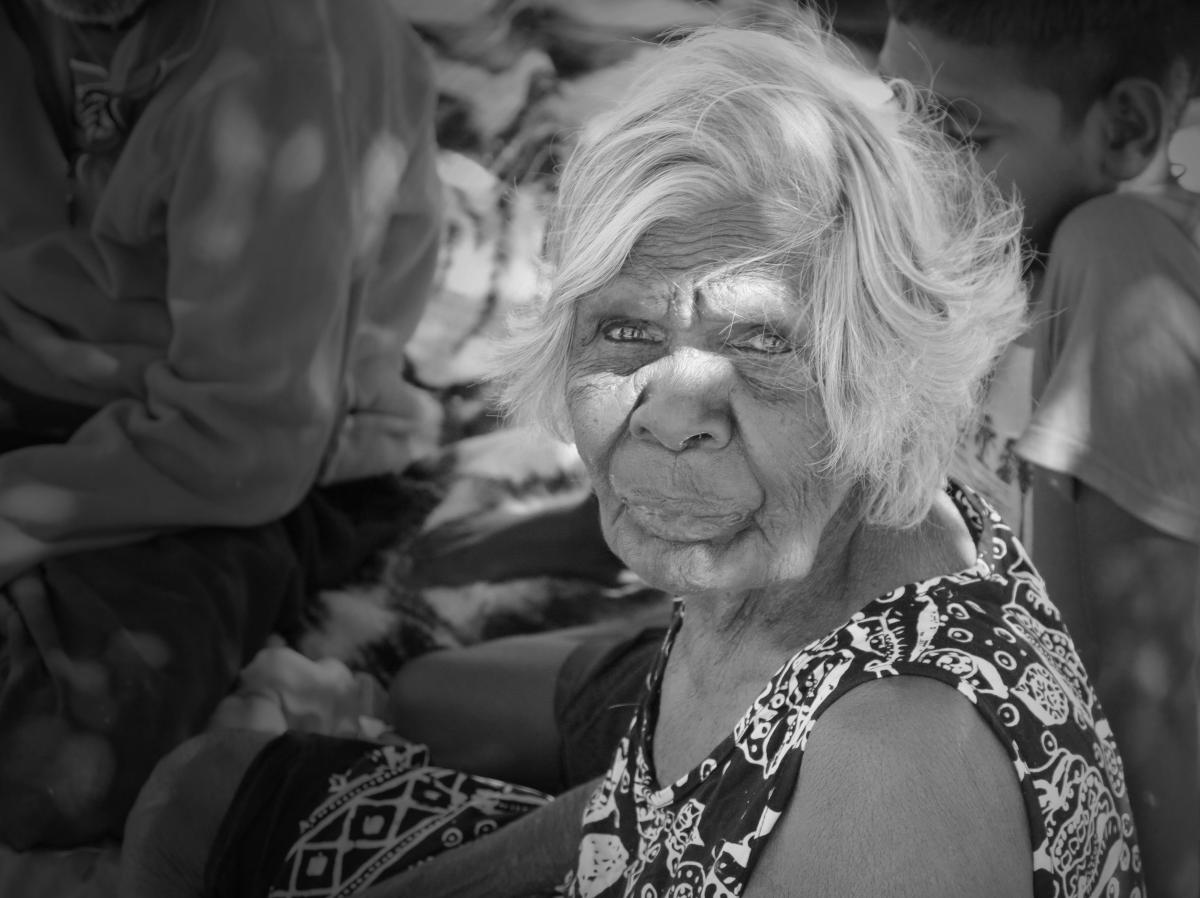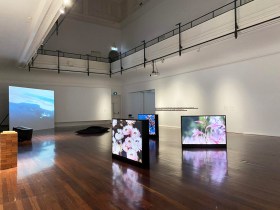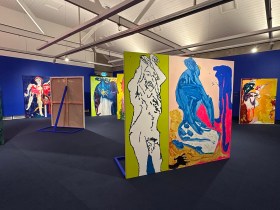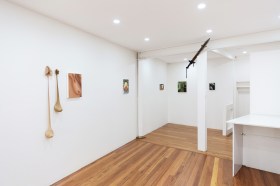The Telstra National Aboriginal and Torres Strait Islander Art Award (NATSIAA) is Australia’s most prestigious national Indigenous art prize, offering the winning artist $50,000 in prize money and a spotlight into the Australian art world and beyond.
Since 1984, the Museum and Art Gallery of the Northern Territory (MAGNT) in Darwin has been home to the Telstra NATSIAA. The hosting of the awards in the capital is both geographically and symbolically significant, notes Marcus Schutenko, Director, MAGNT.
Schutenko said that the Australian arts sector looks to the Territory for information about the issues and achievements in the Indigenous community, and therefore it is ‘really important that the preeminent award is also based here.’
In 2015 the awards themselves celebrate 32 years of supporting Indigenous artists in Australia. Schutenko elaborates on the profile of the awards, ‘The NATSIAA awards are really the principle art award for Indigenous art in Australia so they are of vital importance.
‘They have a strong national profile and internationally they are regarded as the place to see the best of what is coming through in Indigenous art in Australia.’
This year’s overall winner, Jujuka Dolly Snell, of Western Australia, was announced last Friday. The artist was born in 1933, and has been painting since the mid-1980s with her work first exhibited in 1991 and her first solo show taking place in Darwin last year. Her winning painting, ‘Kurtal’ is named for her country and depicts its spirits and stories, and drew judges in with its vibrancy.
‘Her work is an amazing standout, [the judges] gravitated to her work immediately. Jujuka’s work is incredibly bold and colourful…it shows a real confidence as an artist to be able to play so bold and colourfully in the way that she does,’ says Schutenko.
For many Indigenous artists, entering the Telstra NATSIAA is in itself momentous, and a point to which many strive.Artists come from a range of different backgrounds and at various stages of their careers, spanning those practicing for decades to young, emerging artists, explains Schutenko. He estimates that upwards of half of the entering artists work closely with an art centre who may mentor an artist through the selection process. Artists may only enter one work, and face the choice of singling out a work created in the last 12-months that they feel will not only capture the public eye, but best represent their personal style and wider oeuvre.
The award has historically had a lasting impact on an artists’ career, notes Schutenko, who likens it to ‘the golden medal of Indigenous art’ and cites the rewarding experience of playing messenger.
‘I think a lot of artists are really, really proud just to enter… I love hearing the stories from when we ring up an artist and say you’ve been selected to be hung as part of the NATSIA exhibition, and hearing some of the artists reactions – it’s just beautiful and really, really touching.
‘To actually win one of the awards as well – there are many artists whose careers have largely been launched as part of the profile that they’ve received as part of winning the Telstra NATSIAA.’
Applications flow in yearly from across the nation, this year reaching almost 300, narrowed down to 65 shortlisted finalists to be presented in the exhibition. The shortlisted works are transported to MAGNT in Darwin, where the panel cast their judgement on the works in situ under gallery conditions. Applicants are judged across six categories including painting, bark, works on paper, 3D and youth, the winners of which each receive $5,000 with judges also selecting an overall winner who takes home the $50,000 in prize money, along with the title.
The format of the awards has changed over the years to incorporate a more nuanced approach, explains Schutenko, ‘Going back to the first award we called it a first prize a second prize and a third prize…we very quickly moved away from judging all the works by the same criteria and moved towards having works judged based on their medium.’
Schutenko notes that while the awards are promoted in all states, the past few years have seen a higher representation of entries from the Northern Territory, Western Australia, Queensland and South Australia in comparison to Victoria, Tasmania and NSW and welcomes further applications from these states in the future.
In its 32 year history, the Telstra NATSIAA, also supported by the Northern Territory Government and the Australia Council for the Arts, has recorded a unique chronology of Indigenous art, showcasing works from a broad correction of artists every year.
‘I was just going through the old collection, right from its original days through to the works submitted more recently – there has been a very clear evolution in Indigenous art over the course of the NATSIAAs,’ reflects Schutenko.
An exhibition of the 65 shortlisted and winning works will be on display at the Museum and Gallery of the Northern Territory until November 1.
The winners of the further five categories are as follows:
The Telstra General Painting Award – Betty Kuntiwa Pumani from Mimili Community in South Australia for her work Antara (Maku Dreaming).
The Telstra Bark Painting Award – Nonggirrnga Marawili from Yirrkala in the Northern Territory for her work Lightning in the Rock.
The Telstra Work on Paper – Robert Fielding from Mimili Community in South Australia for his work Milkali Kutju.
The Wandjuk Marika Memorial Three-Dimensional Award – Rhonda Sharpe from Larapinta Town Camp in Alice Springs for her work Rhonda.
The Telstra Youth Award – Josh Muir for his work Buninyong.
Vote for your favourite artwork in the People’s Choice Award by visiting Telstra.com/NATSIAA.






